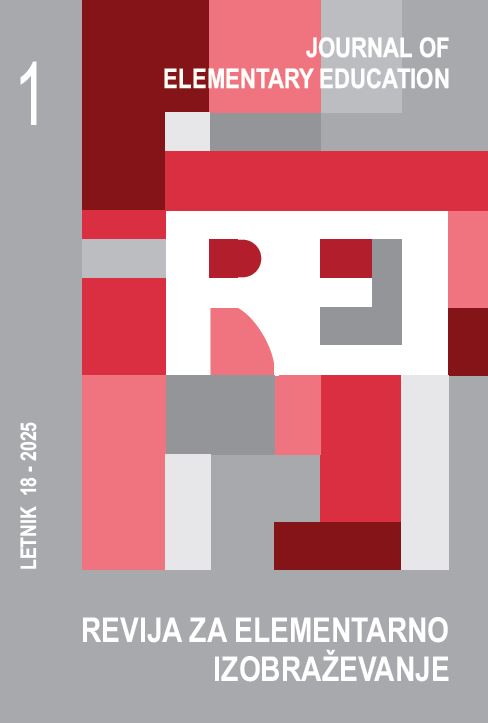Spiritualty of Children in Families and Those in Residential Care
DOI:
https://doi.org/10.18690/rei.5046Keywords:
spirituality, method of pairs, residential care, children, mixed methodology.Abstract
The aim of the study was to investigate the differences in the spirituality of children in residential care and children in families. Applying the method of pairs, children with behavioural problems who are users of residential care and children from families who are equal in terms of sociodemographic variables were selected for the sample. After applying a mixed methodology (Spiritual Sensitivity Scale and Santa Clara questionnaires, and Interpretive phenomenological analysis and thematic analysis of interviews), we obtained results indicating differences in the understanding of spirituality between these two groups. Children from residential care achieved higher results on spirituality questionnaires, and qualitative methodology determined a greater degree of compassion towards close people as well as a deeper relationship with the transcendent.
Downloads
References
Adams, K., Woolley, R., and Hyde, B. (2008). The Spiritual Dimension of Childhood. Jessica Kingsley Publishers.
Blatt, B. (1981). How to destroy lives by telling stories. Journal of Psychiatric Treatment and Evaluation, 3, 183–191.
Bogdan, R., and Biklen, S. K. (1998). Qualitative research for education: An introduction to theory and methods (3rd ed). Allyn & Bacon.
Boyatzis, C. J. (2024). Spiritual Development During Childhood and Adolescence. In L. J. Miller (Ed.), The Oxford Handbook of Psychology and Spirituality (2nd ed.). Oxford University Press.
Braun, V., and Clarke, V. (2006). Using thematic analysis in psychology. Qualitative Research in Psychology, 3(2), 77–101. https://doi.org/10.1191/1478088706qp063oa
Cvetek, M., Simonič, B., and Cvetek, R. (2008). Stvaranje odnosa prema Bogu i Mariji iz perspektive teorije privrženosti. Bogoslovska Smotra, 78(3), 621–649. https://hrcak.srce.hr/30910
Damsma Bakker, A., van Leeuwen, R. R. (René), and Roodbol, P. F. (2018). The Spirituality of Children with Chronic Conditions: A Qualitative Meta-synthesis. Journal of Pediatric Nursing, 43, e106–e113. https://doi.org/10.1016/j.pedn.2018.08.003
Fisher, J. (2004). Feeling good, living life: A spiritual health measure for young children. Journal of Beliefs & Values, 25(3), 307–315. https://doi.org/10.1080/1361767042000306121
Joffe, H. (2011). Thematic Analysis. In D. Harper, and A. R. Thompson (Eds.), Qualitative Research Methods in Mental Health and Psychotherapy (1st ed., pp. 209–223). Wiley. https://doi.org/10.1002/9781119973249.ch15
Kamper, R., Van Cleve, L., and Savedra, M. (2010). Children With Advanced Cancer: Responses to a Spiritual Quality of Life Interview. Journal for Specialists in Pediatric Nursing, 15(4), 301–306. https://doi.org/10.1111/j.1744-6155.2010.00253.x
Kardum, G. (2012). Poimanje žrtve u suvremenoj psihologiji. Zbornik Radova Međunarodnog Teološkog Skupa KBF-a u Splitu, 18, 209–238. https://ojs.kbf.unist.hr/index.php/simpozij–/article/view/391
Kovačević, V., Kardum, G., and Malenica, K. (2019). Kvalitativno narativno istraživanje dječje religioznost i u kontekstu pet dimenzija religioznosti. Bogoslovska Smotra, 89(4), 885–898. https://hrcak.srce.hr/en/234290
Majdak, M. (2019). Stigmatizacija djece i mladih čije ponašanje odstupa od uobičajenog društveno prihvatljivog ponašanja. Mostovi Podrške: Izazovi Suvremenog Odgoja i Odrastanja. https://www.croris.hr/crosbi/publikacija/prilog-skup/731532
Malcom, N. L. (2010). Images of heaven and the spiritual afterlife: Qualitative analysis of children’s storybooks about death, dying, grief, and bereavement. Omega, 62(1), 51–76. https://doi.org/10.2190/om.62.1.c
Miquel, P., Clemente, I., and Ciccorossi, M. (2024). Exploring spirituality, religion and life philosophy among parents of children receiving palliative care: A qualitative study. BMC Palliative Care, 23(1), 43. https://doi.org/10.1186/s12904-024-01345-2
Nelson, J. M., and Slife, B. D. (2024). Theoretical and Epistemological Foundations. In L. J. Miller (Ed.), The Oxford Handbook of Psychology and Spirituality (2nd ed.). Oxford University Press.
Pearce, L. D., Uecker, J. E., and Denton, M. L. (2019). Religion and adolescent outcomes: How and under what conditions religion matters. Annual Review of Sociology, 45, 201–222. https://doi.org/10.1146/annurev-soc-073117-041317
Pietkiewicz, I, and Smith, J. A. (2014). A practical guide to using Interpretative Phenomenological Analysis in qualitative research psychology. Czasopismo Psychologiczne Psychological Journal, 20(1). https://doi.org/10.14691/CPPJ.20.1.7
Plante, T. G. (2010). The Santa Clara Strength of Religious Faith Questionnaire: Assessing Faith Engagement in a Brief and Nondenominational Manner. Religions, 1(1), 3–8. https://doi.org/10.3390/rel1010003
Saldaña, J. (2016). The coding manual for qualitative researchers (3. edition). SAGE.
Schein, D. (2014). Nature’s role in children’s spiritual development. Children, Youth and Environments, 24(2), 78–101. http://www.jstor.org/stable/10.7721/chilyoutenvi.24.2.0078
Singleton, A., Mason, M., and Webber, R. (2004). Spirituality in adolescence and young adulthood: A method for a qualitative study. International Journal of Children’s Spirituality, 9(3), 247–262. https://doi.org/10.1080/1364436042000292176
Spiers, J., and Riley, R. (2019). Analysing one dataset with two qualitative methods: The distress of general practitioners, a thematic and interpretative phenomenological analysis. Qualitative Research in Psychology, 16(2), 276–290. https://doi.org/10.1080/14780887.2018.1543099
Stoyles, G. J., Stanford, B., Caputi, P., Keating, A.-L., and Hyde, B. (2012). A Measure of Spiritual Sensitivity for Children. International Journal of Children’s Spirituality, 17(3), 203–215. https://doi.org/10.1080/1364436X.2012.733683
Superdock, A. K., Barfield, R. C., Brandon, D. H., and Docherty, S. L. (2018). Exploring the vagueness of Religion & Spirituality in complex pediatric decision-making: A qualitative study. BMC Palliative Care, 17(1), 107. https://doi.org/10.1186/s12904-018-0360-y
Tirri, K., Nokelainen, P. (2011). Measuring Multiple Intelligences and Moral Sensitivities in Education. Sense Publishers.
Tirri, K., Nokelainen, P., and Ubani, M. (2006). Conceptual definition and empirical validation of the spiritual sensitivity scale. JET: Journal of Empirical Theology, 19(1), 37–62.
Downloads
Published
Issue
Section
License
Copyright (c) 2025 Goran Kardum, Ante Grčič, Marina Marina

This work is licensed under a Creative Commons Attribution 4.0 International License.
